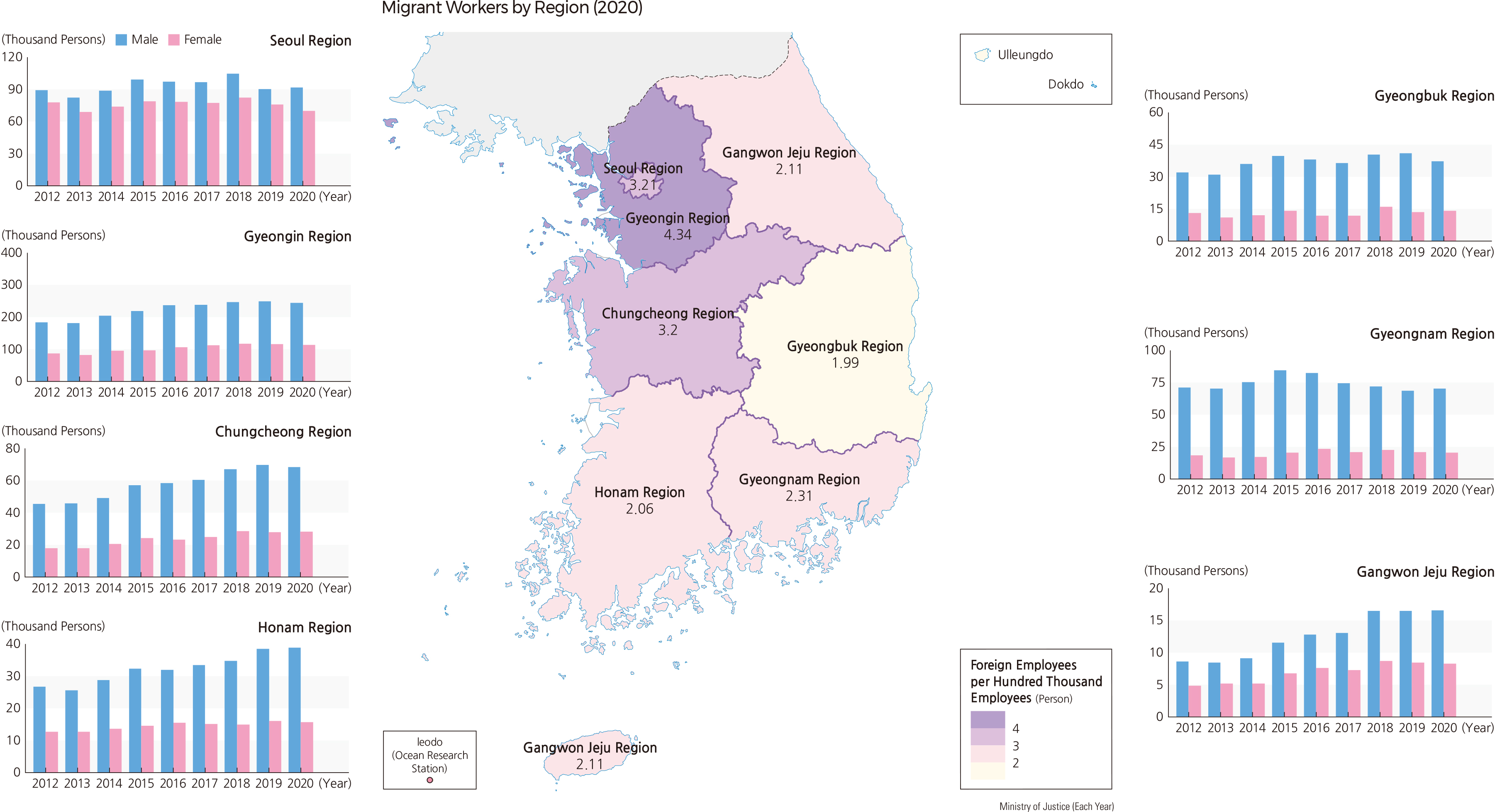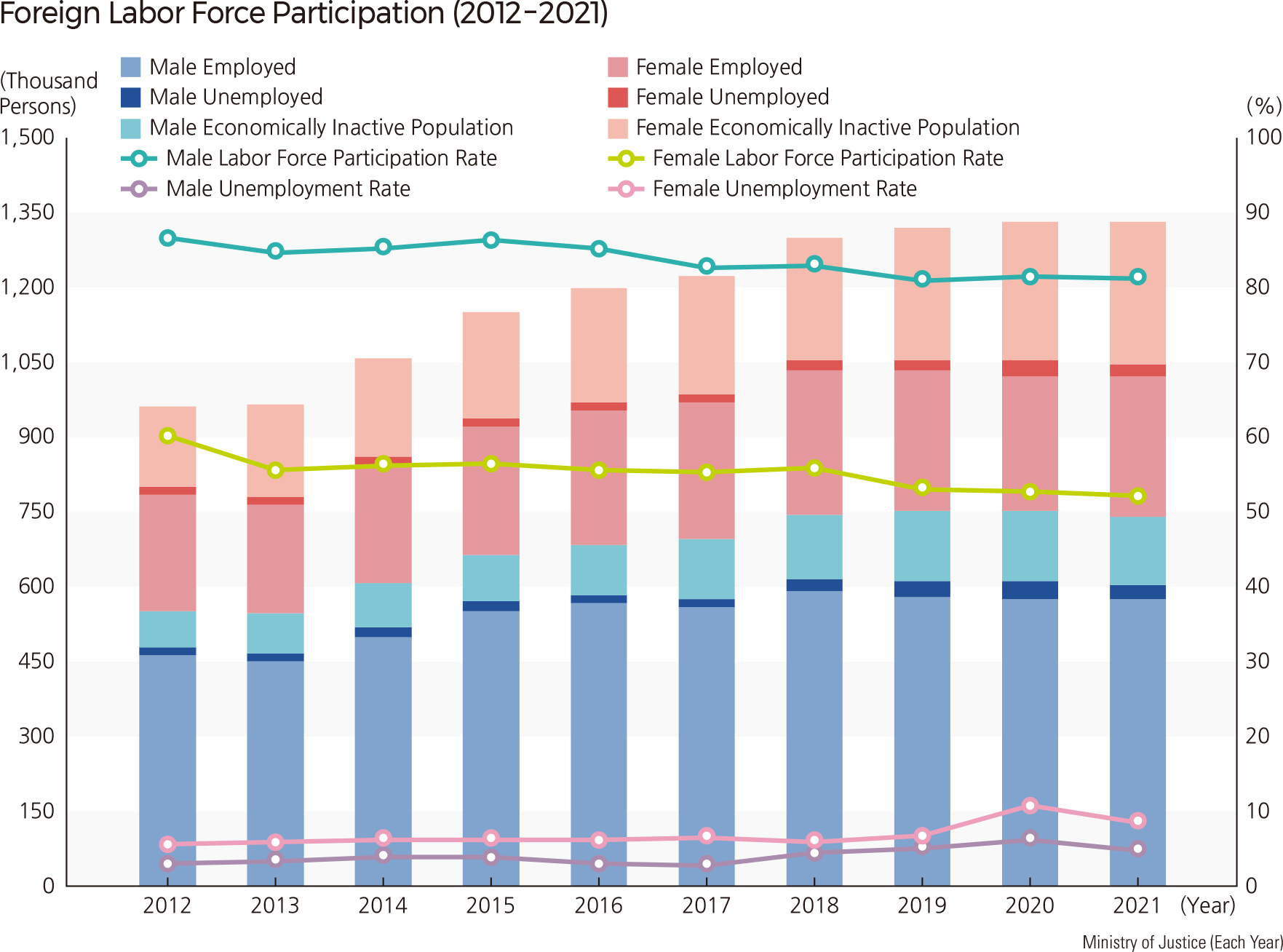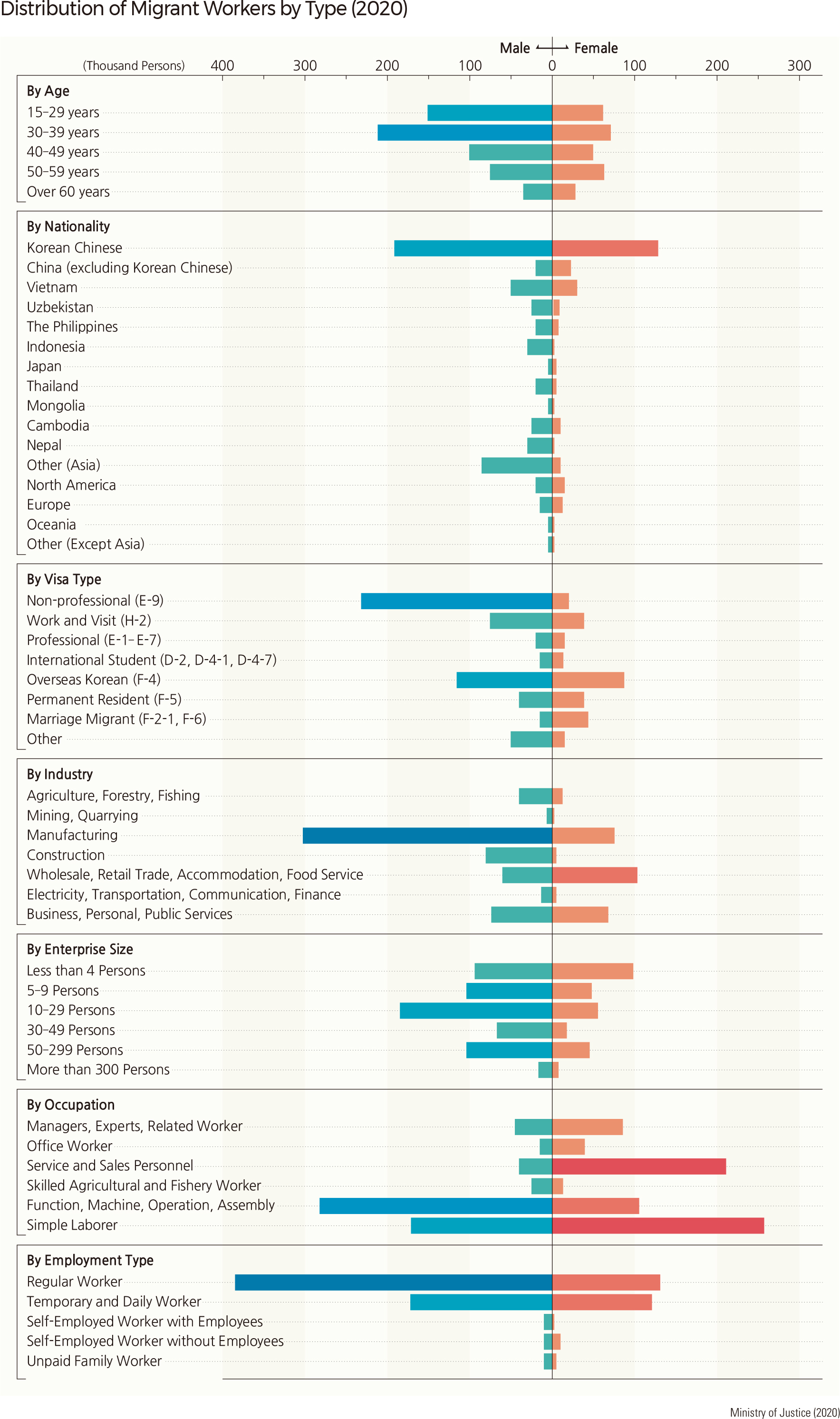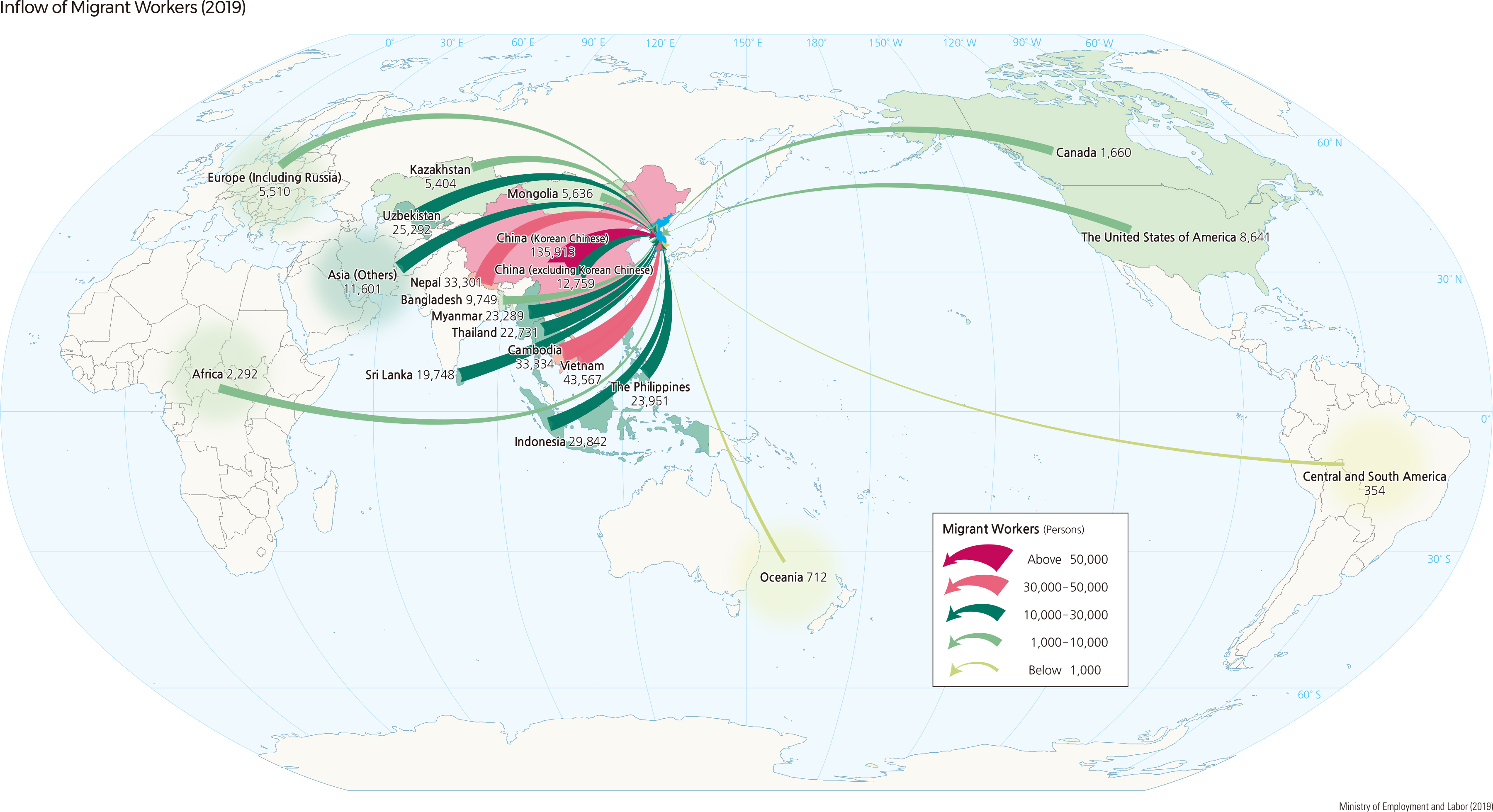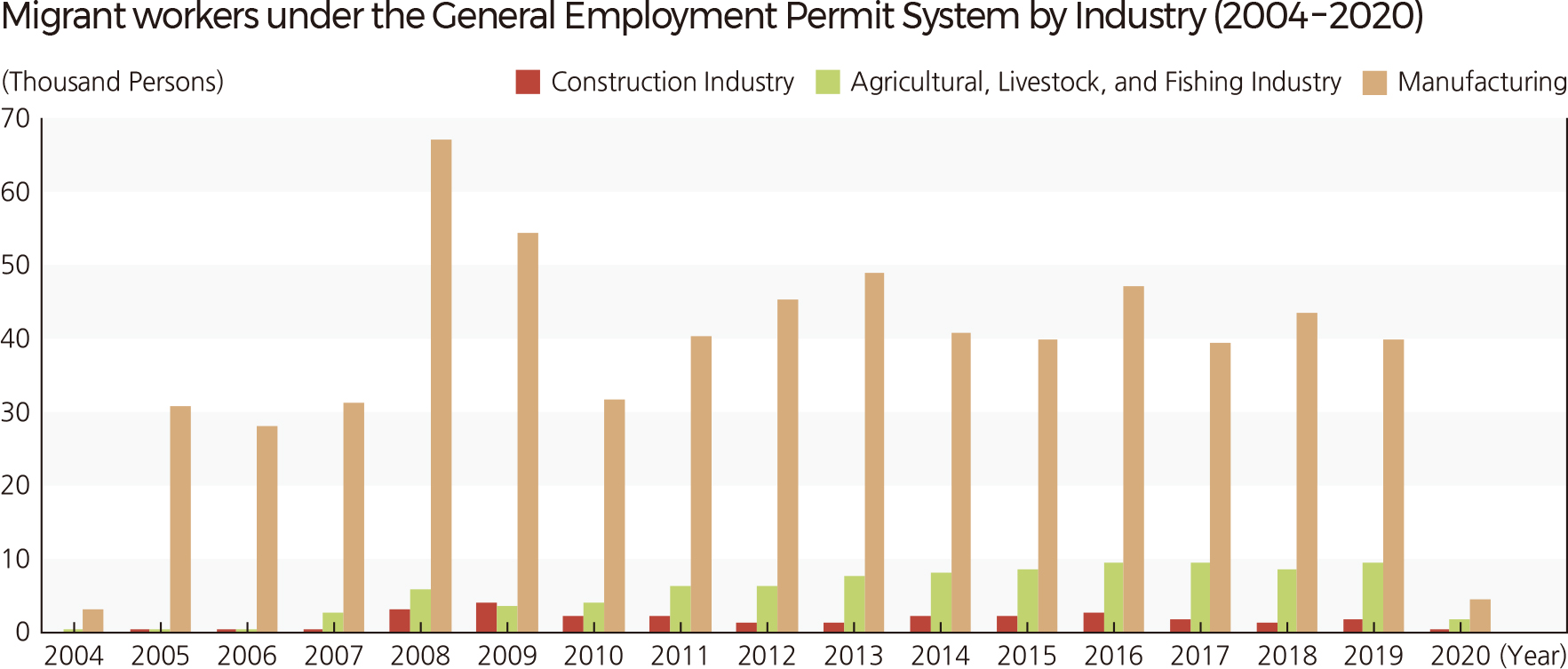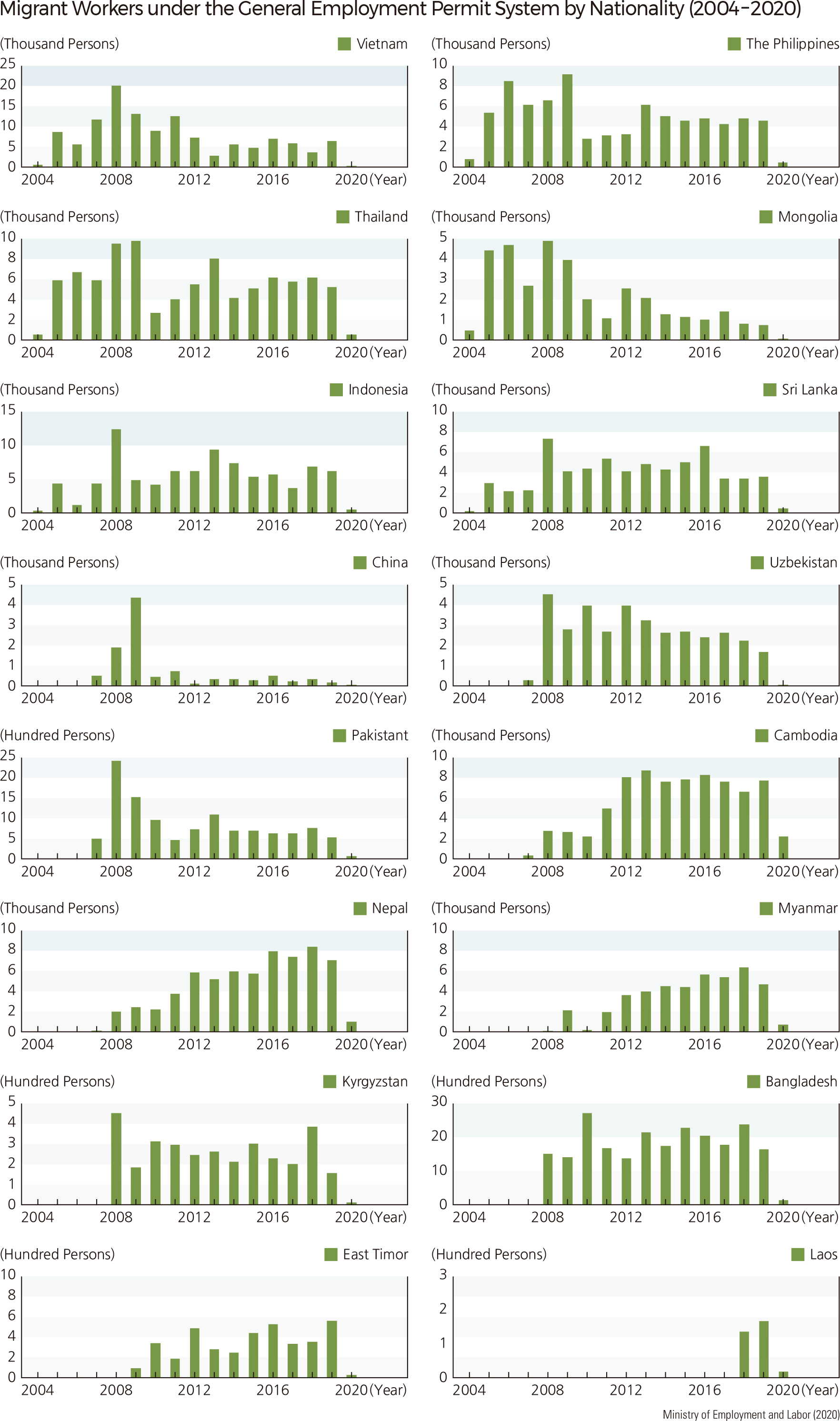English III 2021
The number of foreigners residing in Korea was only about 0.3 million in 1998. However, it increased dramatically to 2 million (3.9% of the total population) in 2020, thanks to a large influx of foreign workers, marriage migrants, international students, and overseas Koreans. This increase is the result of various factors. First, as the Korean economy grows, the wage gap with neighboring Asian countries becomes clear. Second, the industrial structure shifts to the service industry, exacerbating the labor force shortage in the agricultural, livestock, fishing, construction, and small and medium-sized manufacturing industries. Third, the demand for care services has also increased due to the aging of the population and the increase in dual-income households. As of 2020, about 1.4 million immigrants aged 15 and over reside in Korea, of which 1.3 million are foreigners, and the rest are naturalization permits. The economically active population among immigrants is about 950,000, and a labor force participation rate of 68.7%. There are 880,000 immigrants working, with a 63.5% employment rate and a 7.6% unemployment rate. Approximately two-thirds of the 850,000 foreign workers are men, with 58.4% of them in their 20s and 30s. The majority are from Asia, with 320,000 Korean-Chinese, 44,000 Han Chinese, and 85,000 Vietnamese. Most of them entered Korea on a non-professional employment visa (E-9), an overseas Korean visa (F-4), and a visiting employment (H-2) visa. The proportion of residents living in the Seoul Metropolitan Area reaches 60%, and they mainly work in manufacturing, wholesale and retail, food and lodging, and personal service businesses. The Employment Permit System, first introduced in 2003, is divided into the general system, which issues non-professional work visas (E-9) to foreign nationals, and the special system, which grants visiting work visas (H-2) to compatriots with foreign nationality. As of 2019, the 16 countries that have signed a memorandum of understanding (MOU) for labor force transfer are the Philippines, Thailand, Indonesia, Sri Lanka, Vietnam, Mongolia, Uzbekistan, Cambodia, Pakistan, China, Bangladesh, Kyrgyzstan, Nepal, Myanmar, East Timor, and Laos. The workers under the Employment Permit System are engaged in five industries: manufacturing, construction, agriculture and livestock industry, service industry, and fishing industry.
<map> Inflow of Migrant Workers (2019) <graph> Migrant workers under the General Employment Permit System by Industry (2004 – 2020) <map> Migrant Workers under the Employment Permit System (2020) <graph> Migrant Workers under the General Employment Permit System by Nationality (2004 – 2020) |
